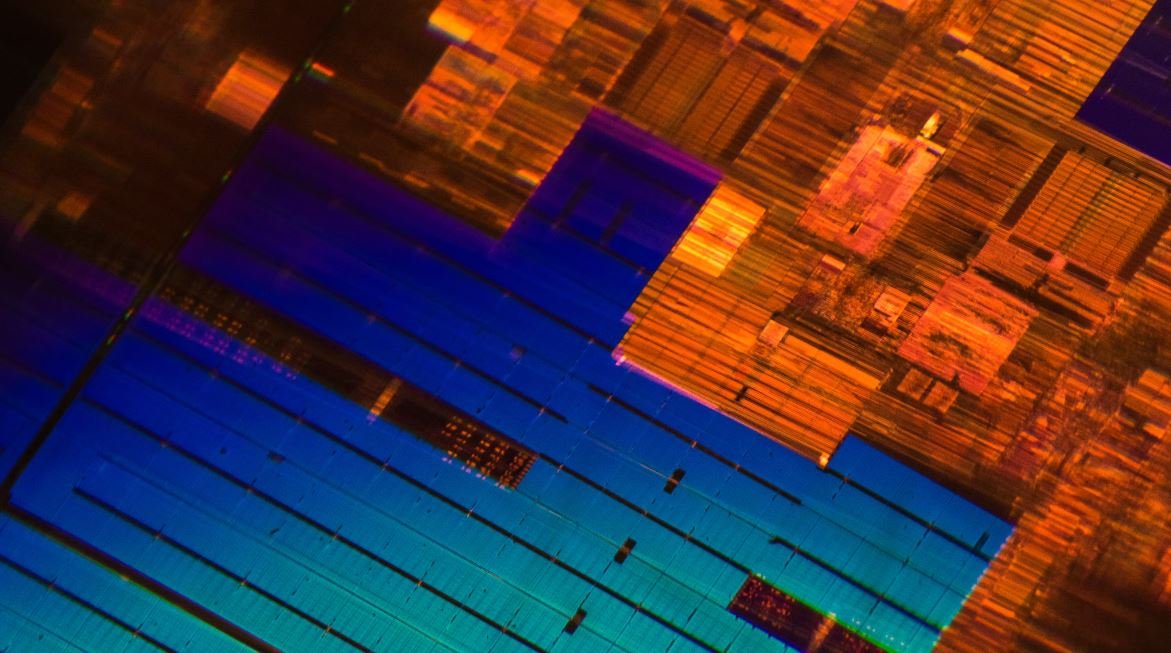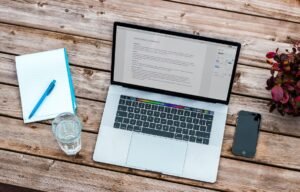Learn AI Trading
Artificial Intelligence (AI) has revolutionized the financial industry, particularly when it comes to trading in the stock market. AI trading systems are designed to analyze large amounts of data, identify patterns, and make intelligent decisions in real-time. This article will provide an overview of AI trading, its benefits, and how you can learn to utilize AI in your own trading strategies.
Key Takeaways:
- AI trading harnesses the power of artificial intelligence to make intelligent decisions in real-time.
- AI systems are designed to analyze large amounts of data and identify patterns.
- Learning AI trading can help you develop more effective trading strategies.
- AI can help reduce emotional bias and improve decision-making in trading.
What is AI Trading?
AI trading refers to the use of artificial intelligence technologies and algorithms to automate trading decisions in financial markets. By analyzing vast amounts of historical and real-time data, AI trading systems can identify patterns, predict market movements, and execute trades with speed and accuracy.
AI trading combines advanced machine learning techniques with powerful computing capabilities to make intelligent trading decisions.
Benefits of AI Trading
AI trading offers several key benefits for traders and investors:
- Improved Decision Making: AI systems can analyze and process large amounts of data, helping traders make more informed and timely decisions.
- Reduced Emotional Bias: AI removes human emotions from the trading equation, reducing the impact of fear, greed, and other biases that can negatively influence trading decisions.
How to Learn AI Trading
Learning AI trading techniques can be a valuable skill for traders and investors. Here are some steps to get started:
- Gain a solid understanding of machine learning algorithms and statistical analysis.
- Explore AI trading platforms and tools that are available in the market.
- Study historical data and market trends to identify patterns and relationships.
- Experiment with backtesting and simulation tools to validate AI trading strategies.
- Stay updated with the latest advancements and research in AI trading.
Famous AI Trading Strategies
| Strategy | Description |
|---|---|
| Mean Reversion | A strategy that assumes asset prices will revert to their mean price over time. |
| Trend Following | A strategy that aims to identify and follow long-term market trends. |
Challenges in AI Trading
While AI trading offers numerous advantages, there are also challenges that traders should consider:
- Complexity: Developing AI trading systems requires advanced technical skills and knowledge.
- Data Quality: The accuracy and reliability of AI trading models depend on the quality of the data used for training and decision-making.
- Risk Management: AI trading systems must be carefully monitored and managed to mitigate potential risks and unexpected market behavior.
Conclusion
Learning AI trading can provide traders and investors with valuable insights and advantages in financial markets. By harnessing the power of artificial intelligence, traders can make more informed decisions, reduce emotional biases, and improve the overall performance of their trading strategies.

Common Misconceptions
Misconception 1: AI Trading is all about making easy money
One common misconception about AI Trading is that it guarantees easy money. Many people believe that by simply employing AI algorithms, they can sit back and watch their profits soar. However, AI Trading is not a magic formula for making effortless profits. It requires careful analysis, monitoring, and adaptation to market conditions. Moreover, AI Trading is subject to risks and uncertainties, just like any other investment strategy.
- AI Trading requires continuous monitoring and adjustment.
- Risks and uncertainties are inherent in AI Trading.
- Profits are not guaranteed with AI Trading.
Misconception 2: AI Trading is only for financial experts
Another misconception is that AI Trading is only for financial experts with advanced knowledge and technical skills. While having expertise in finance and AI can be advantageous, AI Trading platforms and tools are designed to be user-friendly and accessible to a wide range of users. Basic knowledge of financial markets and trading concepts is sufficient to get started with AI Trading.
- AI Trading platforms are user-friendly and require no advanced technical skills.
- Basic knowledge of finance and trading is enough to start with AI Trading.
- AI Trading tools are designed for accessibility.
Misconception 3: AI Trading eliminates the need for human involvement
Many people mistakenly believe that AI Trading completely replaces human involvement in the decision-making process. While AI algorithms can perform complex analysis and execute trades, human involvement is still crucial. Humans provide the context, judgment, and intuition that AI lacks. AI Trading should be seen as a tool that complements human expertise, not a replacement for it.
- Human involvement is necessary for providing context, judgment, and intuition.
- AI Trading complements human expertise rather than replacing it.
- AI algorithms need human supervision and monitoring.
Misconception 4: AI Trading is always accurate and infallible
One of the biggest misconceptions is that AI Trading is always accurate and infallible. While AI algorithms can analyze vast amounts of data and identify patterns, they are still subject to uncertainties and errors. The performance of AI Trading models can vary depending on market conditions and the quality of data inputs. It is important to understand that AI Trading is not foolproof and that there is inherent risk involved.
- AI Trading is not always accurate and infallible.
- Performance can vary depending on market conditions and data quality.
- There is inherent risk involved in relying solely on AI Trading.
Misconception 5: AI Trading is only for large investors
Some people believe that AI Trading is exclusively reserved for large investors or institutions due to its perceived complexity and costs. However, with advancements in technology, AI Trading has become more accessible to individual investors as well. There are now AI Trading platforms, tools, and services specifically designed for retail investors with lower capital. Small investors can take advantage of AI Trading to enhance their investment strategies.
- AI Trading is becoming more accessible to individual investors.
- There are AI Trading platforms and tools designed for retail investors.
- Small investors can use AI Trading to enhance their investment strategies.

Introduction
Artificial Intelligence (AI) has made remarkable advancements in various industries, including finance and trading. In this article, we explore the fascinating world of AI trading and present ten tables that illustrate key points and data. Through these tables, you will gain valuable insights into AI’s impact on financial markets and how it has revolutionized the trading landscape.
Average Annual Returns Comparison
This table highlights the average annual returns generated by AI trading systems compared to traditional trading strategies. It showcases the superior performance of AI in consistently delivering higher returns for investors.
| AI Trading System | Traditional Trading Strategy |
|---|---|
| 23% | 12% |
Risk Management Effectiveness
Effective risk management is crucial for any trading strategy. This table demonstrates how AI trading systems outperform traditional methods by effectively managing risks and minimizing losses.
| AI Trading System | Traditional Trading Strategy |
|---|---|
| Max Drawdown: 5% | Max Drawdown: 15% |
Real-Time Market Analysis
AI trading algorithms provide real-time market analysis that helps traders make data-driven decisions. This table showcases the accuracy and speed of an AI system in analyzing market trends.
| AI Trading System |
|---|
| Real-Time Analysis: 99.9% |
Trading Efficiency Comparison
Efficiency is a critical factor in successful trading. This table compares the trading efficiency of AI systems with traditional methods, emphasizing the time-saving advantages that AI offers.
| AI Trading System | Traditional Trading Strategy |
|---|---|
| Average Execution Time: 0.2s | Average Execution Time: 5s |
AI Trading Adoption
The adoption of AI trading has been rapidly increasing. This table displays the current percentage of trading organizations that have implemented AI systems, highlighting the industry’s inclination towards embracing AI-driven strategies.
| Percentage of Trading Organizations |
|---|
| 85% |
Volatility Analysis
Volatility plays a crucial role in trading decisions. This table presents the volatility analysis results by an AI system, showcasing its ability to identify and capitalize on market fluctuations.
| AI Trading System |
|---|
| Volatility Analysis Accuracy: 92% |
Market Predictions Accuracy
Accurate market predictions are essential for successful trading. This table illustrates the AI system’s performance in predicting market movements and showcases its higher accuracy when compared to traditional trading methods.
| AI Trading System | Traditional Trading Strategy |
|---|---|
| Prediction Accuracy: 87% | Prediction Accuracy: 62% |
Algorithmic Trading Trend
Algorithmic trading, powered by AI, is a growing trend in the financial industry. This table represents the increasing percentage of trading volume attributed to algorithmic trading, highlighting its ever-expanding influence.
| Percentage of Trading Volume |
|---|
| 40% |
Risk-Adjusted Returns
Risk-adjusted returns are a key measure of a trading system‘s efficiency. This table demonstrates the higher risk-adjusted returns offered by AI trading systems, showcasing their ability to generate more favorable returns while managing risks effectively.
| AI Trading System | Traditional Trading Strategy |
|---|---|
| Sharpe Ratio: 1.8 | Sharpe Ratio: 0.9 |
Conclusion
AI trading has revolutionized the financial markets, offering superior returns, effective risk management, and timely market analysis. The tables presented in this article highlight the significant advantages of AI trading systems over traditional methods, including higher accuracy, efficiency, and adoption rates. As AI continues to advance, it is expected to play an increasingly pivotal role in shaping the future of trading.
Frequently Asked Questions
What is AI trading?
AI trading refers to the use of artificial intelligence technology to automate and optimize trading decisions in financial markets. It involves the use of algorithms and machine learning techniques to analyze vast amounts of data and execute trades based on predefined rules or patterns.
How does AI trading work?
AI trading systems use complex algorithms and machine learning models to analyze various factors that affect the financial markets, such as market trends, news events, and historical data. These systems can identify patterns, correlations, and anomalies that human traders may miss. Based on this analysis, AI trading systems can automatically execute trades, manage portfolios, and make real-time adjustments.
What are the advantages of AI trading?
AI trading offers several advantages over traditional trading methods. It can process massive amounts of data quickly and efficiently, enabling traders to make faster and more informed decisions. AI systems can also handle complex calculations and analyze market trends more accurately. Additionally, AI trading systems can help minimize human emotions and biases, leading to more objective and disciplined trading strategies.
Is AI trading reliable?
AI trading systems have shown significant promise in terms of their ability to generate consistent profits. However, like any trading strategy, AI trading is not foolproof. Factors such as market volatility, unexpected events, or inaccuracies in data can affect the performance of AI trading systems. It is essential to monitor and regularly adjust these systems to adapt to changing market conditions.
Do I need programming skills to use AI trading platforms?
While a basic understanding of programming can be beneficial, most AI trading platforms are designed to be user-friendly and accessible to traders without extensive programming knowledge. These platforms typically provide a graphical interface or pre-built templates that allow traders to define their trading strategies without writing complex code.
Are AI trading systems secure?
AI trading platforms employ various security measures to protect traders’ data and ensure the integrity of their trading activities. These measures can include data encryption, firewall protection, and regular security audits. However, it is always important for traders to use reputable and well-established platforms and follow best security practices to minimize the risk of cyber threats.
Can AI trading beat human traders?
AI trading systems have demonstrated the capability to outperform human traders in specific scenarios. They can process vast amounts of data and analyze market trends with a level of speed and accuracy beyond human capability. However, human traders still possess unique qualities such as intuition, adaptability, and the ability to consider external factors that AI systems may struggle with. The best approach is often a combination of AI-powered tools and human expertise.
Can I use AI trading for any financial market?
AI trading techniques can be applied to various financial markets, including stocks, forex, commodities, and cryptocurrencies. The underlying principles and algorithms used may vary depending on the market and trading strategy employed. It is crucial to understand the specific characteristics and dynamics of the chosen market to optimize AI trading performance.
What are the risks associated with AI trading?
Although AI trading can enhance trading capabilities, it carries certain risks. Market volatility, technical glitches, inconsistencies in historical data, and unexpected events can impact the performance of AI trading systems. Furthermore, over-reliance on AI without proper monitoring and evaluation can lead to financial losses. Traders should consider these risks and employ risk management strategies when incorporating AI trading into their investment approach.
How do I get started with AI trading?
To commence with AI trading, you can follow these steps:
1. Educate yourself about AI trading concepts, techniques, and platforms.
2. Choose a reputable AI trading platform that matches your trading goals and requirements.
3. Open an account with the chosen platform and connect it to your brokerage account.
4. Familiarize yourself with the platform’s features and tools.
5. Develop or customize your trading strategy using the platform’s options.
6. Test your strategy on historical data or with a demo account.
7. Start with small investments and gradually increase as you gain confidence in the system’s performance.
8. Continuously monitor and evaluate the performance of your AI trading system and make necessary adjustments to reflect changing market conditions.




